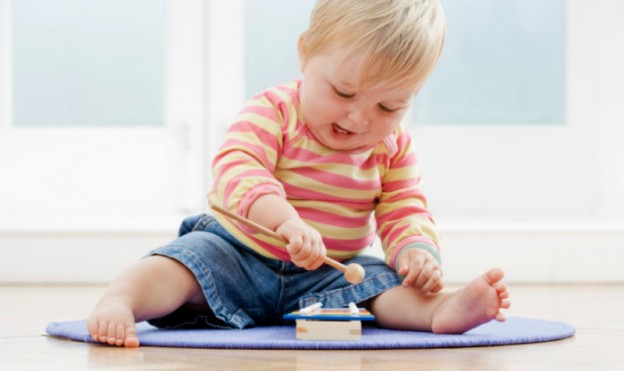
Therapy Tips
Why Teachers, Therapists and Parents should Teach Children with Autism to Play
“Play is often talked about as if it were a relief from serious learning. But for children play is serious learning. Play is really the work of childhood.” -- Mr. (Fred) Rogers, PBS We all know about our five senses and how we use them to learn about our environment and those in it. But if you observe human beings interact, and ask people about it, you will learn that there does seem to be a sixth sense; the “social” sense. Neurotypical children hone it through repeated exposure to family and friends which provide opportunities to imitate their parents, siblings, and peers, and internalize “the rules”.Play & The Sixth Sense
Play is the vehicle through which children learn about the rules and roles they see in their environment. Play is the way children make sense of their experiences, formulate episodic memory, and build social skills. Children with Autism can have real difficulty learning to play. In the movement to address behavioral challenges, which is a byproduct of the 2004 federal mandate that a Behavior Plan be part of the annual IEP, there is increased focus on compliance. There is now increased focus on individualized ABA/VBT programs and sensory diet implementation into the daily regimen.Individual and Group Play Skills Development
While those individualized techniques and regimens are certainly crucial to the child’s self regulation, so is individual and group play skills development, something that seems to be forgotten these days! Today’s child in special education has more transitions i.e. a busier day and more structured tasks to complete, than the previous generation. Today’s child with Autism/special needs is probably getting ABA intervention focusing on Discrete Trials more often and at an earlier age, than the previous generation. While this is great news in some ways, in other ways it indicates a drop in opportunities to foster play, and allow for downtime. We need to be cautious about embracing one technique over others as the “magic pill” for all children to ingest. We need to be vigilant about putting play back into daily routines in special education schools and homes of children with special needs around the country.Why is play so important for children with Autism?
Ones who may not “take to it” naturally, may start to “stim” on parts of a toy, or may gravitate to select toys over and over, ignoring and possibly rejecting others?Why Target Play Skills Development in Treatment?
Play contributes to, and prepares for, being receptive to learning social skills. Play helps generalize those skills to other settings/environments. Here are my top reasons why I integrate elements of both VBT/ABA and Floortime™ in my intervention. Why I target play skills development in treatment, to foster social communication proficiency:1. Play Improves Body Awareness.
Over the years “in the trenches” I have worked together with so many parents, teachers, therapists from all domains, and paraprofessionals. We have all noticed a pattern. If a child came to us with very few lines on their hands, it seemed to indicate that they did not play with toys easily. They either rejected them outright, couldn’t hold/manipulate them with fingers/both hands, or mouthed them indiscriminately. We need to address that during the first two stages of play development, the Sensory Play Phase and the Exploratory Play Phase, so that children can learn to:- Use toys to develop cognition (Joint Attention, Object Permanence etc.) and Self Concept i.e. the ability to be aware, have preferences, and make choices etc.
- Use toys to enhance motoric dexterity for better execution of Activities of Daily Living (ADL): walking/running, feeding, dressing, toileting, vocational skills, and hand-eye coordination. Play prepares the child for engaging with his/her environment more independently and functionally.
- Use toys to enhance comprehension of how the world “works” re: sights, sounds, textures, and location etc. Play fosters “whole body learning” by building a lexicon of both vocabulary and routines comprised of “muscle memory”, “episodic memory”, and repetition/practice.
2. Play Improves Understanding/Expressing Feelings
Over my years of doing both individual and group speech therapy sessions, I have seen the power of play, and how it provides unique opportunities for children to practice and internalize both the roles and rules they see in their environment. We need to address this through the third phase of play development, the Replica Play Phase, so that children learn to:- Use toys to emotionally engage with themselves and with others. Children use play to access memories of events they remember fondly, (or not so much), and need to come to terms with. That’s why some play schemas are reenacted again and again, until the child has memorized a favorite activity or resolves feelings about an unpleasant one.
- Use toys to facilitate social referencing through empathy. That means that play integrates emotional and cognitive development through perspective, AKA Theory of Mind (TOM). Children use play to learn how to imitate, empathize, and emote with/ for others, especially when engaged with anthropomorphic toys such as dolls etc.
- Use toys to facilitate resiliency i.e. multi-sensory self-soothing and ability to “decompress” and manage stress. We need to teach children to use toys to learn from, and also act on, to deal with challenging life cycle and unexpected events. That’s why I believe in combining Cognitive Behavioral Therapy and Play Therapy techniques in treatment. We all give ourselves a “time out” to play with toys; adult toys are just more sophisticated and expensive! (Mobile Apps, cars, Kitchen Aid™ mixers, electronic gadgets etc.)
3. Play Improves Problem Solving
In my time spent as both a speech therapist and an entrepreneur, I have seen the importance of learning problem solving skills; as both a child and an adult. The importance of learning to become a Me, and then a We. A person needs to understand the structure and routine, rules, time-frame, and expectations of his/her environment, so that if/when one veers “off course”, one can adjust accordingly. Play accomplishes all that, if used correctly, during the fourth phase, the Symbolic Play Phase. That’s where children learn to:- Use toys to sequence events of a process, or steps in multiple directions. We need to use play to help children learn to physically and mentally pattern what they see/hear in front of them, and duplicate that and generalize that to other activities.
- Use toys to learn time management, the Causality Loop i.e. “The If-Then Contingent”, on which all of life is hinged! This leads to better understanding of time passing and the need to wait for delayed gratification, which is the start of negotiation, a key component of problem solving. How many of us bargain with children? With ourselves?
- Use toys to collaborate and creatively explore solutions to challenging situations/outcomes. We need to teach/let children play, in order to learn via trial and error how to resolve conflict; inner and outer (when toys don’t “work” or things don’t go their way). Conflict resolution is the highest form of problem solving and social proficiency. It is a life long struggle that all human beings work on.



